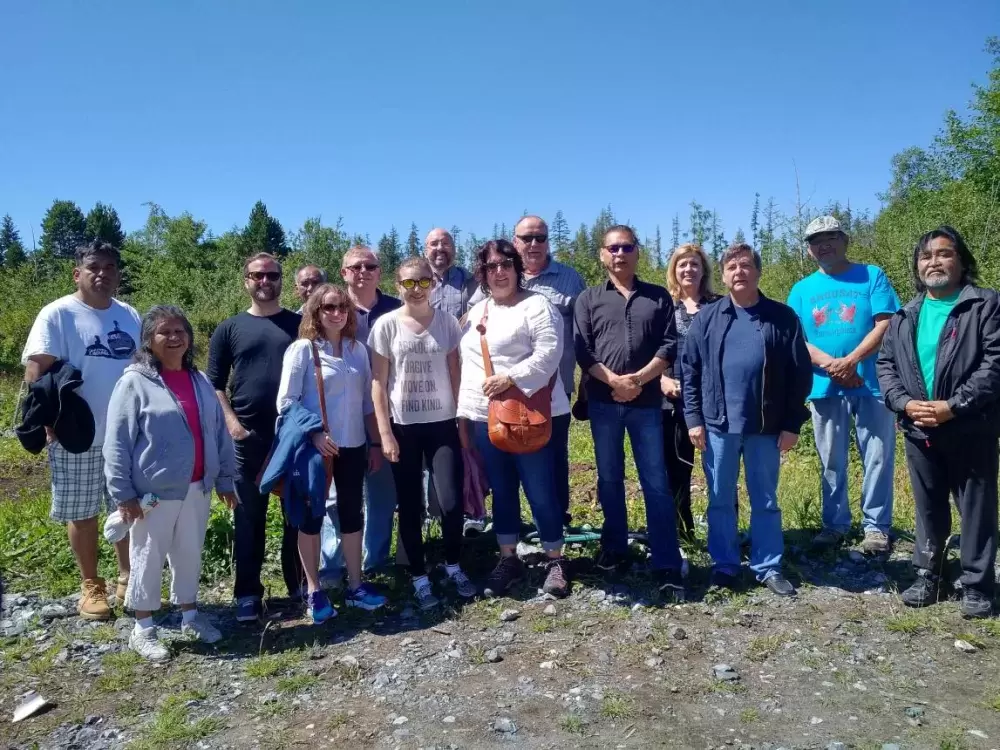Representatives of a specific claims tribunal have travelled to Ahousaht First Nation this morning to get the lay of the land. The group spent the last two days at Tin Wis in Tofino hearing testimony about lands that were removed from Ahousaht's use by the Crown, granting them instead to the Presbyterian Church in Canada in 1904.
There are four island areas adjacent to the current reserve at Maaqtusiis that compensation is being claimed for. The land won’t be returned, (the tribunal does not have that authority) though suitable land for housing is in limited supply. What the Ahousaht people have been seeking is accommodation for the value of the land and its loss of use over the last 100-plus years.
Their ownership of the land dates back to a 13-year war against a neighboring tribe in the early 1800s when the territory came into Ahousaht’s possession. It’s a story, not only about warring Indigenous nations, however, but also about the arrogance of religious entitlement at the time, the destruction of a First Nation’s economy, and the attempt to mold Native fishermen into farmers, said elected Chief Councillor Greg Louie.
It’s a complicated business, said Tyee Ha’wilth Maquinna Lewis George, who attended the tribunal.
The specific claim heard this week is for one area named Aauuknuk , part of Lot 363. At one time a chief had granted the Presbyterian Church permission to build a school on part of his territory, but when the school was burned to the ground, the chief at that time wanted the land back.
Instead the Crown granted 140 acres of waterfront property to the church. The church drained a salmon-bearing lake, leaving a bog, and planted cranberries, replacing the fishing economy without consultation with the First Nation.
Chief Councillor Louie called the two days of testimony empowering, enlightening, interesting and educational.
“We had our speakers talk with a lot of passion,” he said. He described it as “controlled anger”, talking about religious groups determined to separate First Nations from their lands.
“How this unfolded is an insult to our chiefs and people,” said Louie, “taking our land and culture and livelihood.”
He said the testimony went very well, and was at times emotional, touching the tribunal judge and lawyers for the Crown, Louie observed.
Of those giving testimony was Louis Frank Sr., Andy Webster, and Cliff Atleo Sr. Frank was asked how he had learned the history he was providing, Maquinna told Ha-Shilth-Sa, and he said his dad told him.
Webster had gone on a quest to find the original posts driven by the Indian Agent that marked the reserve boundaries in the late 1800s. He has so far located one, said Maquinna.
Witnesses were asked what the Ahousaht people used the lands for; was it a burial ground, berry picking area or hunting ground? Commissioner O’Reilly, who was mandated to allot lands to Indian peoples in the late 1800, received instructions from the Deputy Superintendent General of Indian Affairs to be “especially careful not to disturb the Indians in the possession of any villages, fur trading posts, settlements, clearings, burial places and fishing stations occupied by [the Indians] and to which they may be specially attached,” reads Ahousaht’s Declaration of Claim to the tribunal. The claim also insists that lands that should have been part of the alottment in 1889 were not included.
Ahousaht had originally filed a claim with Canada on Feb. 15, 2001 alleging breaches of Canada’s fiduciary duties, statutory duties and/or their duty of care owed to Ahousaht. In a letter dated Aug. 6, 2009, Canada stated “it is the decision of the Minister of Indian Affairs…that there is no outstanding lawful obligation on the part of the Government of Canada." The Declaration of Claim to the Specific Claims Tribunal is dated June 20, 2012.
The claim for compensation under tribunal rules is that accommodation must not be in excess of $150 million. Asked what Ahousaht is hoping to receive in accommodation, Maquinna and Louie could not say.
“It’s all waterfront,” said Maquinna, who suggested a good comparison in market value would be Chesterman Beach in Tofino, where just one housing lot sold recently for $5 million. And it’s just not the market value of the property that will be sought. It is for loss of use, and for “what we could have been,” said Maquinna.







